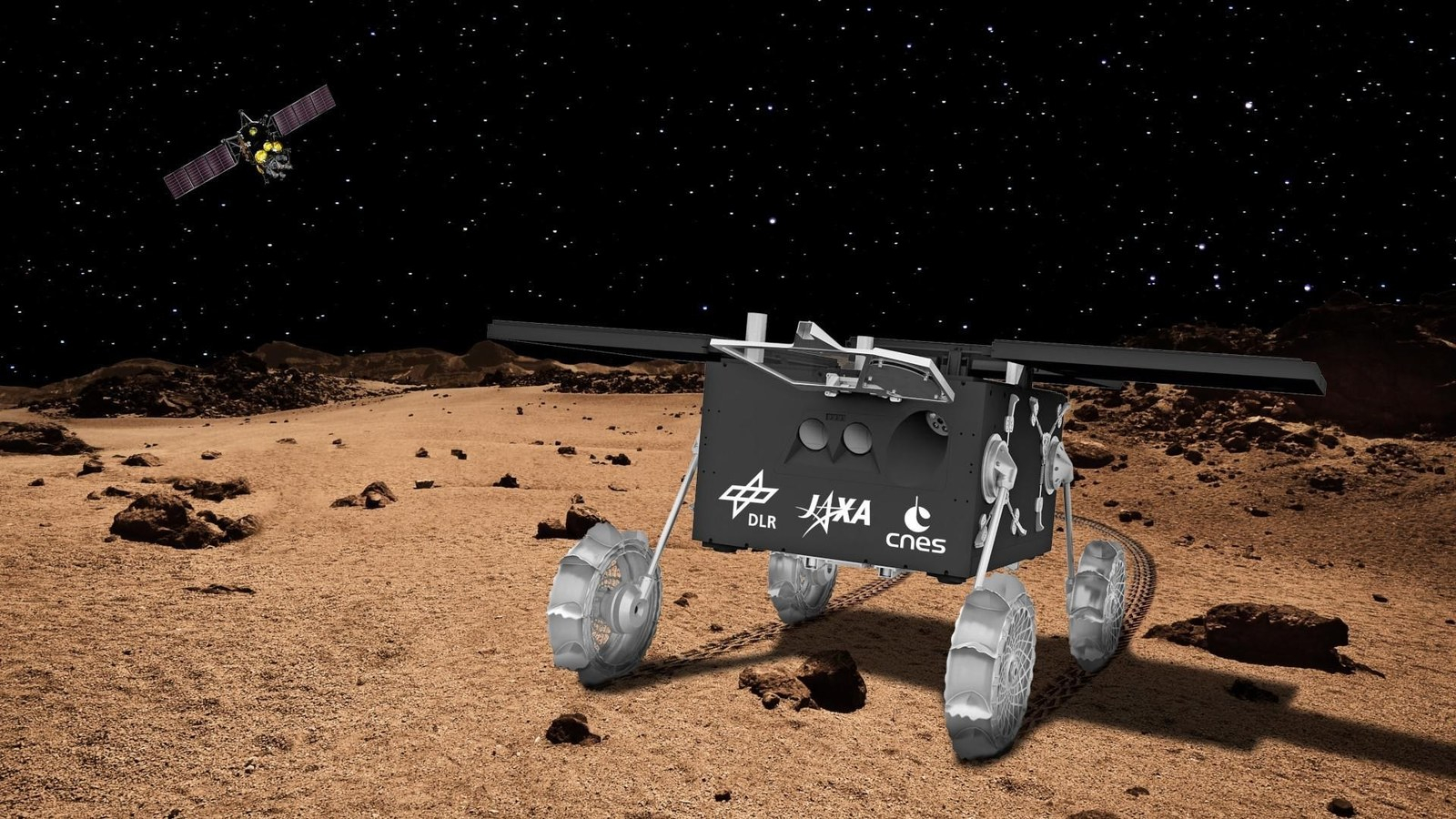This little rover will ride shotgun on Japan's ambitious Mars moon sample-return mission
IDEFIX is a European-built rover for Japan's Phobos sample-return mission.

A small rover built in Europe has arrived in Japan in preparation for its voyage to Mars.
The autonomous 55-pound (25-kilogram) rover is called IDEFIX and is part of the Japan Aerospace Exploration Agency's (JAXA) Martian Moon Exploration (MMX) probe that aims to collect samples of the Mars' moon, Phobos.
The little, four-wheeled rover recently arrived in Japan, according to a Feb. 26 post on X (formerly known as Twitter) written by the MMX mission account.
Related: New Japanese spacecraft aims to explore the mysterious moons of Mars
IDEFIX, named for the small white dog in the Asterix comics, was jointly built by the German Aerospace Center (known by the German acronym DLR) and the French space agency Centre National d'Etudes Spatiales (CNES).
After a long journey from Europe, the MMX rover IDEFIX (developed by @DLR_EN/@CNES) has arrived in Japan! We share in the team’s gleeful “Yatta!/Tadaa!” as the rover is unpacked 📦🤩 An official handover will take place after post-transport checks 🇯🇵🇫🇷🇩🇪 Welcome to Japan, IDEFIX! pic.twitter.com/y2CXed8ya8February 26, 2024
The main MMX spacecraft aims to grab 0.35 ounces (10 grams) of Phobos' material in 2029. It will then send the precious cargo towards Earth; arrival is expected to occur in 2031. IDEFIX will play a part in this overall objective by landing on Phobos first and gathering key information in preparation for the landing of the main spacecraft. The rover will also analyze the Martian moon's surface composition and texture at selected locations, according to DLR — if it can land and operate successfully in a near zero-gravity environment all by itself, that is.
"The biggest challenge for IDEFIX is that it has to carry out many operations — particularly the uprighting after landing on Phobos — fully autonomously in order to survive," Stéphane Mary, CNES Project Manager for IDEFIX, said in a DLR statement. "It wouldn't survive if it waited for commands from Earth to arrive."
Get the Space.com Newsletter
Breaking space news, the latest updates on rocket launches, skywatching events and more!
A key goal of MMX is to determine whether Phobos and its fellow Martian satellite Deimos are captured asteroids or a coalescence of fragments that were blown into orbit after a giant impact struck Mars.
MMX was originally scheduled to launch in September of this year, yet doubts over the readiness of the new Japanese H3 rocket meant JAXA took the decision to delay the mission until the next Mars launch window in 2026.
H3 has since reached Earth orbit for the first time, bouncing back from the failure of its debut launch in 2023. The mission will launch on an H3 rocket from Tanegashima Space Center in 2026, hopefully arriving in Mars orbit in 2027 to begin mapping and analyzing Deimos and Phobos. IDEFIX and the main MMX spacecraft will then be able to land on Phobos in 2029.
Join our Space Forums to keep talking space on the latest missions, night sky and more! And if you have a news tip, correction or comment, let us know at: community@space.com.

Andrew is a freelance space journalist with a focus on reporting on China's rapidly growing space sector. He began writing for Space.com in 2019 and writes for SpaceNews, IEEE Spectrum, National Geographic, Sky & Telescope, New Scientist and others. Andrew first caught the space bug when, as a youngster, he saw Voyager images of other worlds in our solar system for the first time. Away from space, Andrew enjoys trail running in the forests of Finland. You can follow him on Twitter @AJ_FI.









